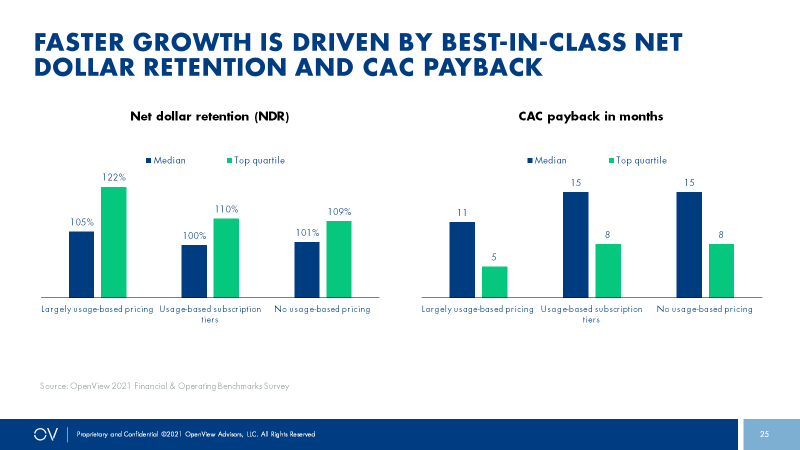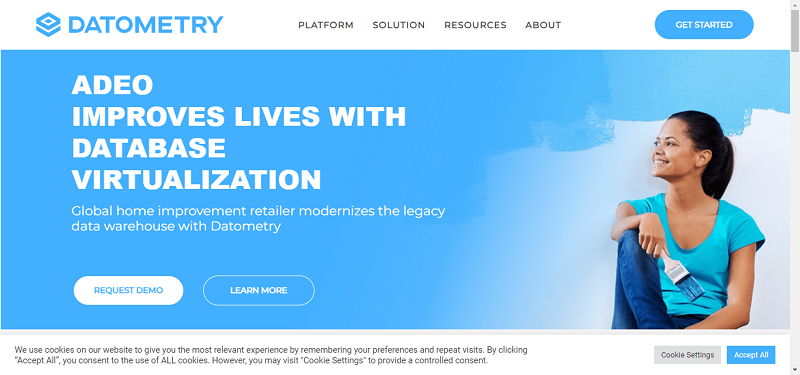We are now in an era where many businesses are flipping their business model and shifting from subscription-based pricing to usage-based models, to better cater to the modern ‘pay-as-you-consume’ buyer.
Usage-based pricing, also known as consumption-based pricing, enables customers to pay for how much they actually consume a given product or service. According to OpenView Partners, 45% of SaaS businesses adopted usage-based pricing in 2021 (versus 34% in 2020) and it is predicted that 56% of companies will be using this strategy by 2023.

Therefore this trajectory indicates that usage-based pricing will eventually dominate the market and it’s something that SaaS businesses need to keep on their radar!
Let’s unpack the 4 reasons for why we are seeing this shift in pricing strategy.
The desire for hyper personalization is driving customers to demand that they only pay for what they actually use. Subscription plans are more so being seen as ‘cookie cutter’ product offers containing features that customers don’t even really need. Furthemore, customers don’t want to have to pay for platform seats that aren’t being occupied.
It also comes down to providing superior satisfaction. There is nothing like when a customer can see the direct value they are receiving for their input (i.e. investment and engagement time with the product).
In order to deliver a flexible consumption-based pricing offer, it is essential that you have an intelligent billing system that can configure your various consumption-based rules so that your products can feel personalized to the customer, but rapidly and easily scaled.
The numbers don’t lie! According to OpenView Partners, “usage-based companies tend to have best-in-class net expansion or net dollar retention rates.”
Also let’s face it, you can only sell so many subscription upgrades, add-ons, seats and adjacent services before you maximize revenue potential with a particular customer. By having a usage-based pricing model, you grow with your customer’s volume, ultimately creating an avenue for compounding revenue growth.
However, offering usage-based priced products is not where it stops. It’s imperative that your back-end billing system is up to the task of accurately calculating usage to the very last decimal point, in order that potential revenue is not leaked.
Every business has their natural ebbs and flows in regards to sales revenue cycles. There can be seasons where there is more demand for usage of a product versus other times of the year.
Therefore businesses have the opportunity to ‘ride that wave’ during the peak seasons and maximize revenue from their customers when usage is at an all time high. Furthermore, that extra revenue beyond the baseline can bolster the revenue that is lost during periods where usage is much lower.
One critical element to have in place is accurate reporting where you can monitor future patterns in revenue. Therefore it is important to adopt an advanced billing solution that provides such intelligent analytical tools and dashboards so that seasonality can be comprehended.
With the flexibility and transparency of consumption-based billing, customers are more likely to use the products and services which are billed based on their consumption rather than the fixed subscription charges. With this new trend, companies also have the huge advantage of understanding their customers’ usage behavior to come up with better solutions. So, this is why we are seeing a shift in many businesses moving from the simple subscription economy to the consumption-based economy, in order to capture additional returns.
However, there is complexity involved in this as you have to keep track of the entitlement. The subscription entitlement used in a given period of time can be minutes, number of pages, or any resource that you’re metering. Therefore it is imperative that you have an advanced billing solution to start charging for additional usage of services once they cross over the entitlement knot.
In order to harness a usage-based pricing strategy, it is essential to have an advanced billing platform that can accurately compute usage so that every dollar is captured. Learn more about OneBill’s advanced usage rating capability today.
By JK Chelladurai





